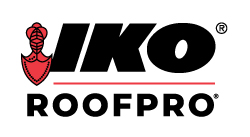
Even though you may spend very little time in your home’s attic, you want to make sure that the area stays as dry as possible. Moisture problems in the attic can reduce the effectiveness of your home’s heating and air conditioning systems and can cause mold, reducing the air-quality in your home. If moisture in your attic goes undetected, it can cause the underlying structure of your roof to rot and require replacement.
There are three categories of problems that can increase attic moisture levels. The first is the leakage of warm moist air from the heated part of your home into the attic. This leakage can occur in a number of ways. Older homes may not have an adequate vapour barrier between the living space and the attic. Alternatively, the areas around chimneys or light fixtures may not be adequately sealed to prevent the flow of warm air into the attic.
The main generators of moisture in the home are the clothes dryer, the shower and the stove and oven. It is important to have a fan in the bathroom and above the stove. Both of these fans must vent directly to the outside of the home and not into the attic. The clothes dryer must also vent directly outside and never into the basement or the interior of the home.
Another contributor to attic moisture levels is the loss of conductive heat into the attic. If your attic is not sufficiently insulated, heat will travel through the ceiling into the attic, even if there are no holes or spaces allowing air to leak directly into the attic. When the warm air touches a cold surface in the unheated attic, condensation results.
The third major contributor to attic moisture levels is a lack of adequate ventilation in the attic. Ventilation in the attic provides a quick escape route for any warm and moist air that enters the attic. The most effective form of attic ventilation includes vents along the length of the soffit at the lower edge of the roof as well as vents near the ridge of the roof. The number of vents that your home requires will depend on the size and shape of your roof and attic.
Many homeowners who have problems with high moisture levels in the attic also find that their roofs develop ice dams in the winter. The same conditions that can cause elevated moisture levels in the attic contribute to ice damming in the winter. If you have problems with attic moisture levels or ice dams, contact an experienced roofer to help you pinpoint the problem.










